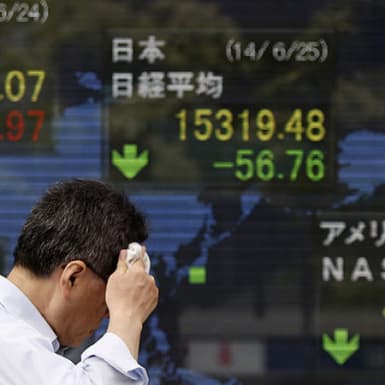global perspectives
rising global leverage implies lower resilience to shocks.



The rise in global leverage we have witnessed since 2008/2009 leaves the global economic system much less resilient to any income or interest rate shocks.
Since the end of the financial crisis, the world has seen a dramatic increase in the amount of leverage in the non-financial sector. According to the Bank of International Settlements (BIS), debt in the non-financial sectors has increased by USD 71 trillion since the first quarter of 2007. This has been driven by an increase in both private debt (USD 40 trillion) and public debt (USD 31 trillion). As a result, the debt-to-GDP ratio has increased to almost 250%, up from about 210%, over the same period.
While the overall increase is important, the aggregate measures can mask what is really happening at the country level and also across sectors within a country. Some countries like Germany have actually reduced their overall amount of leverage over the period, while countries like China, Canada, France, and Singapore have increased greatly. In China’s case, another dose of policy stimulus, which will once again use the credit easing channel, is most likely to draw attention to the heavy debt burden facing the economy.
Many investors are worried this increased leverage may be the cause of the next crisis. Our view on the subject is more nuanced. We believe increased levels of indebtedness make the economy more vulnerable to a shock, which, in turn, amplifies the impact of that shock on the economy. Investors will be particularly focused on any uptick in interest rates as more debt, especially at the private level, means the economy can become more sensitive to changes in the cost of debt.
This is important for monetary policy as it means that increased leverage reduces the neutral rate (rate at which the economy is thought to be in a demand and supply equilibrium, leading to stable inflation).
However, interest rate rises do not necessarily need to be destabilising. As long as the increases in interest rates are gradual, economic agents will adjust their spending, meaning weaker discretionary spending for households and weaker profits and investment for corporations. The main risk is if interest rates jump suddenly higher or the speed of rate rises is faster than markets are expecting. Central banks in highly-indebted countries understand this and are likely to refrain from normalizing monetary policy too quickly. However, the risk could come if lending rates are linked to longer-term market rates and not the policy rate. This means that continued Federal Reserve tightening, or a sharp increase in US Treasury yields, could lead to a sharp increase in lending rates, by forcing up the level of global rates as the rate shock creates global spill-overs.
In addition, investors worrying about high levels of indebtedness often forget about the risk presented by a decline in income, which, in our view, has the potential to be more destructive. Any loss of income could have a dramatic impact on the capacity of the highly indebted to service their debt, leading to default. This scenario would require a negative exogenous shock, which could arrive in a variety of ways. In China, it could be through a dramatic loss of revenue for exporters following an escalation of the trade war, for example. Moreover, the real danger is that the increased default rate could create a negative feedback loop of weaker growth, prompting further income losses and defaults.
As such, we don’t think that 2019 would see negative implications of a big shock to a highly leveraged global system come the fore, however we do expect this issue to remain a key structural challenge as the current business cycle moves forward.
important information.










